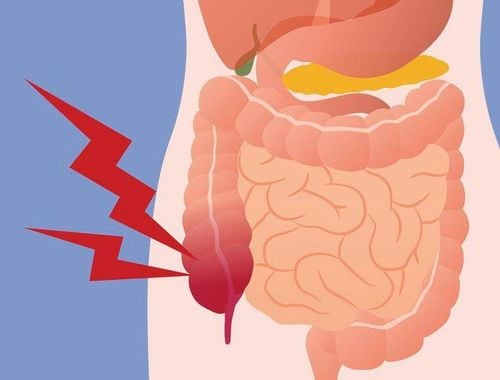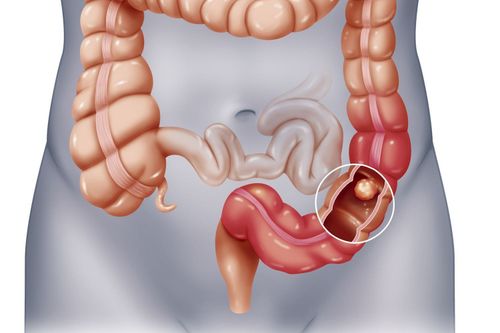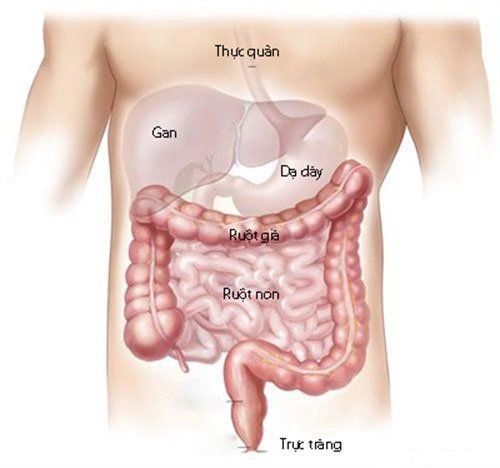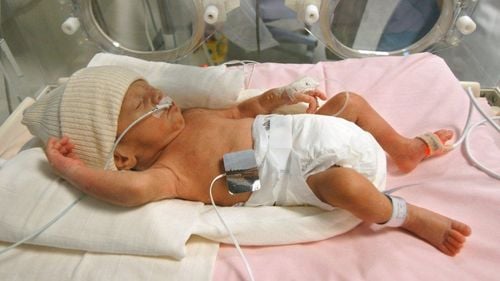This is an automatically translated article.
The article was professionally consulted by MSc Vu Van Quan - Department of General Surgery & Anesthesia - Vinmec Hai Phong International General Hospital.Postoperative intestinal adhesions are one of the common complications after surgery. In mild cases, with mild complications of intestinal adhesions, patients can be treated medically by using pain relievers, reducing intestinal motility, patients stopping eating to let the intestines rest. In case of intestinal adhesions causing intestinal obstruction, medical treatment is not effective, the patient needs surgery to manage intestinal adhesions after surgery.
1. What is postoperative de-adhesion surgery?
Postoperative de-adhesion is an abdominal or extraperitoneal surgical surgery to maximize separation as required and according to the abdominal anatomy, exposing the internal organs and the mesentery connecting the peritoneum to the peritoneal wall. , abdominal cavity to treat adhesions.
Postoperative de-adhesion surgery can be laparoscopic or open to the abdomen.
2. What to prepare for surgery to treat intestinal adhesions after surgery?
2.1. Patients Before surgery to remove adhesions, patients need to fast for at least 6 hours. At the same time, clean the whole body, especially the surgical area. Depending on each case, the patient is assigned to do additional tests to check.
Patients will be examined under anesthesia before surgery to ensure safety.
2.2. Surgical support equipment Basic surgical tool set depending on laparoscopic or laparotomy Multi-function operating table adjustable in many positions

3. Surgical procedure to treat intestinal adhesions after surgery
3.1. Patient position The patient is instructed to lie on his or her back with legs spread out
3.2. Anesthesia The patient is given general anesthesia, which can be combined with post-operative general pain relief techniques and muscle relaxation combined with surgical resuscitation to help ventilate the circulation. Avoid visceral mesenteric congestive edema to help the surgery take place safely.
3.3. Surgical technique The doctor chooses the surgical site, the width of the incision to choose the most suitable starting point for laparotomy. Open the abdomen according to the principle from the outside to the inside, going layer by layer for surgery, both opening the abdomen and removing the adhesion, starting from the place with the least adhesion. Remove adhesions of the mesentery, omentum, abdominal wall and viscera. Remove adhesions and dissect the correct dissection of the original embryology anatomy, surgically remove all adhesions according to the original indications, minimizing the impact that may cause damage to the internal organs, blood vessels, nerves, and lymphatics. De-adhesion of complicated lesions due to difficult adhesions Abdominal lavage reduces the risk of re-attachment of the intestines, arranges organs according to anatomy Close the abdomen according to anatomical layers
4. Post-operative care for intestinal adhesions

Follow up the patient according to the principles of postoperative abdominal surgery Comprehensive care of the patient, do not eat food by mouth, but give food through intravenous route until normal bowel movements return. Care of the incision to avoid infection Monitor gastric tube and withdraw when the patient is stable Monitor for symptoms such as: vomiting, abdominal pain, abdominal distension, infection... to detect early postoperative complications If there are complications of intestinal obstruction after surgery With signs such as: vomiting, abdominal pain, bowel obstruction, abdominal distension... it is necessary to treat as soon as possible, give the patient antibiotics, gastric suction infusion In addition, to prevent complications such as: : intra-abdominal bleeding, incision rupture, intestinal perforation, paralytic ileus, electrolyte disturbances, renal failure, malnutrition... Master. Doctor. Vu Van Quan has more than 10 years of experience working in the field of General Gastroenterology, specializing in the examination and treatment of surgical pathologies of the gastrointestinal tract, liver, bile, pancreas and diseases of the abdominal peritoneum and abdominal wall. .
Please dial HOTLINE for more information or register for an appointment HERE. Download MyVinmec app to make appointments faster and to manage your bookings easily.














